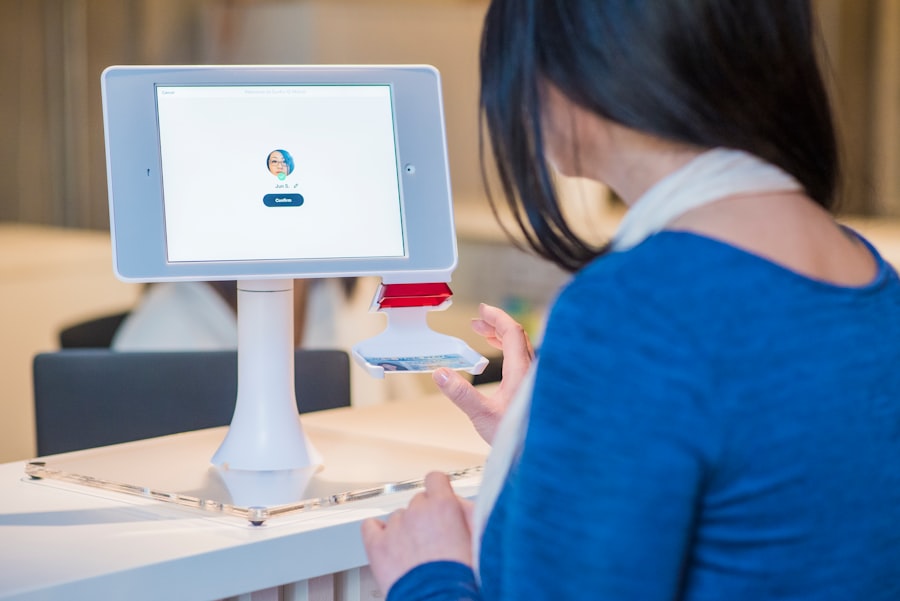In the ever-evolving landscape of artificial intelligence, Facebook’s DeepFace stands out as a remarkable achievement in the realm of facial recognition technology. Launched in 2014, DeepFace was developed by a team of researchers at Facebook with the goal of enhancing the platform’s ability to recognize and tag individuals in photographs. This sophisticated system employs deep learning algorithms to analyze facial features, achieving an impressive accuracy rate that rivals human capabilities.
By leveraging vast amounts of data and advanced neural networks, DeepFace has transformed the way users interact with images on social media, making it easier to connect with friends and family through visual content. DeepFace operates by mapping a face into a 3D model, allowing it to identify and differentiate between various facial expressions and angles. This innovative approach not only improves the accuracy of recognition but also enables the system to function effectively even in challenging conditions, such as low lighting or occluded faces.
As social media continues to grow in popularity, the demand for efficient and reliable facial recognition systems has surged, positioning DeepFace as a pivotal player in this technological revolution. The implications of such advancements extend beyond mere convenience; they raise important questions about privacy, security, and the ethical use of AI in our daily lives.
Key Takeaways
- Facebook DeepFace is a facial recognition system developed by Facebook to identify human faces in digital images.
- The science behind facial verification involves deep learning algorithms that analyze facial features and patterns to verify identity.
- DeepFace has applications in social network analysis, including friend suggestions, photo tagging, and content personalization.
- Privacy concerns and ethical implications arise from the potential misuse of facial recognition technology and the collection of personal data.
- Advancements in facial recognition technology, such as DeepFace, have the potential to revolutionize social networking and digital security.
The Science Behind Facial Verification
Computer Vision and Machine Learning Synergy
At the heart of DeepFace lies a sophisticated interplay of computer vision and machine learning techniques. The system leverages convolutional neural networks (CNNs), designed to process pixel data and extract relevant features from images. By training on millions of labeled images, DeepFace learns to recognize distinct facial characteristics, such as the distance between eyes, the shape of the nose, and the contour of the jawline.
Face Detection and Preprocessing
This extensive training enables the model to generalize its understanding of faces, allowing it to accurately identify individuals even when presented with new images. The process begins with face detection, where the system identifies and isolates faces within an image. Once a face is detected, it undergoes a series of transformations to normalize its orientation and scale. This step is crucial, as variations in lighting, angle, and expression can significantly impact recognition accuracy.
Face Embeddings and Verification
After preprocessing, the facial features are extracted and encoded into a compact representation known as a face embedding. This embedding serves as a unique identifier for each individual, allowing for rapid comparisons against a database of known faces. The combination of these advanced techniques results in a highly efficient and accurate facial verification system that has set new standards in the field.
Applications of DeepFace in Social Network Analysis

DeepFace’s capabilities extend far beyond simple photo tagging; they have profound implications for social network analysis. By enabling users to easily identify and connect with friends through images, DeepFace enhances user engagement on platforms like Facebook. This increased interaction not only fosters community building but also provides valuable insights into social dynamics and relationships.
Researchers can leverage this data to study patterns of connectivity, influence, and information dissemination within social networks. Moreover, businesses can harness DeepFace’s technology for targeted marketing campaigns. By analyzing user-generated content and identifying key influencers within their networks, companies can tailor their advertising strategies to reach specific demographics more effectively.
The ability to recognize faces in images allows brands to create personalized experiences that resonate with their audience, ultimately driving customer loyalty and engagement. As social media continues to evolve, the applications of DeepFace in social network analysis will likely expand, offering new opportunities for both users and businesses alike.
Privacy Concerns and Ethical Implications
| Privacy Concerns and Ethical Implications | Metrics |
|---|---|
| Data Breaches | Number of reported data breaches |
| Consumer Trust | Percentage of consumers concerned about privacy |
| Regulatory Compliance | Number of privacy-related fines or penalties |
| Employee Training | Hours of privacy and ethics training provided |
| Transparency | Percentage of companies with transparent privacy policies |
Despite its many advantages, the rise of facial recognition technology like DeepFace has sparked significant privacy concerns and ethical debates. The ability to identify individuals from images raises questions about consent and surveillance. Users may not be fully aware that their faces are being analyzed and stored by algorithms, leading to potential misuse of their personal data.
This lack of transparency can erode trust between users and platforms, prompting calls for stricter regulations governing the use of facial recognition technology.
Studies have shown that certain demographic groups may be misidentified at higher rates than others, leading to potential discrimination and reinforcing societal inequalities.
As DeepFace continues to evolve, it is crucial for developers and policymakers to address these ethical implications proactively. Implementing robust guidelines for data usage, ensuring diverse training datasets, and fostering transparency will be essential steps in mitigating these risks while harnessing the benefits of this powerful technology.
Advancements in Facial Recognition Technology
The field of facial recognition technology is rapidly advancing, with innovations emerging at an unprecedented pace. Following the success of DeepFace, numerous companies and research institutions have developed their own systems that push the boundaries of what is possible in facial verification. Techniques such as generative adversarial networks (GANs) have gained traction, allowing for more realistic image synthesis and improved training datasets.
These advancements not only enhance recognition accuracy but also enable systems to adapt to new challenges, such as recognizing faces in diverse environments or under varying conditions. Moreover, the integration of facial recognition technology with other AI-driven applications is creating new possibilities across various sectors. For instance, combining facial recognition with emotion detection can provide insights into user sentiment during interactions on social media platforms.
In security contexts, advanced facial recognition systems can be employed for real-time monitoring in public spaces, enhancing safety measures while raising important ethical considerations regarding surveillance practices. As these technologies continue to evolve, they will undoubtedly shape the future landscape of digital interactions.
The Future of Facial Verification in Social Networks

The Promising Future of Facial Verification
The future of facial verification in social networks appears promising yet complex. As user expectations for personalized experiences grow, platforms will increasingly rely on advanced facial recognition technologies like DeepFace to enhance user engagement and streamline interactions. The ability to automatically tag friends in photos or suggest connections based on visual similarities will become more commonplace, creating a seamless experience for users navigating their social networks.
Balancing Innovation with Ethics
However, this future also necessitates a careful balance between innovation and ethical considerations. As platforms adopt more sophisticated facial verification systems, they must prioritize user privacy and data protection. Striking this balance will require ongoing dialogue among stakeholders—including developers, policymakers, and users—to establish guidelines that promote responsible use while fostering technological advancement.
A Delicate Trajectory
Ultimately, the trajectory of facial verification technology will depend on how well it can adapt to societal needs while addressing the ethical challenges it presents.
DeepFace and its Impact on Digital Security
Beyond its applications in social networking, DeepFace has significant implications for digital security. As organizations increasingly rely on biometric authentication methods to secure sensitive information, facial recognition technology plays a crucial role in verifying identities. By integrating DeepFace into security protocols, companies can enhance their defenses against unauthorized access while providing users with a convenient authentication method.
However, this reliance on facial recognition also raises concerns about potential vulnerabilities. Cybercriminals may attempt to spoof or manipulate facial recognition systems using techniques such as photo editing or deepfakes. To counter these threats, ongoing advancements in security measures will be essential.
Implementing multi-factor authentication that combines facial recognition with other biometric indicators—such as fingerprints or voice recognition—can bolster security while maintaining user convenience. As digital security continues to evolve alongside technological advancements like DeepFace, organizations must remain vigilant in safeguarding against emerging threats.
The Role of DeepFace in Shaping the Future of Social Networking
In conclusion, Facebook’s DeepFace represents a significant milestone in the development of facial recognition technology and its applications within social networking.
As we look toward the future, it is clear that facial verification will play an increasingly integral role in shaping our digital experiences.
The ongoing advancements in this field present both opportunities and challenges that must be navigated thoughtfully. By prioritizing ethical considerations alongside technological innovation, we can harness the power of systems like DeepFace to create more engaging and secure social networks while safeguarding user privacy. Ultimately, as we continue to explore the potential of facial recognition technology, it will be essential to strike a balance that fosters trust and enhances our digital interactions in meaningful ways.
Wenn Sie sich für die Themen rund um Facebooks DeepFace, wie Gesichtsverifizierung und die Analyse von Gesichtsmerkmalen interessieren, könnte auch der Artikel über die Integration von physischen und virtuellen Räumen im Metaverse von Interesse sein. Dieser Artikel behandelt, wie Technologien in sozialen Netzwerken und Sicherheitsüberwachungssystemen zunehmend mit virtuellen Umgebungen verschmelzen, was Parallelen zur automatischen Foto-Tagging und Gesichtserkennungstechnologie aufweist. Lesen Sie mehr darüber, wie diese Technologien die Interaktion in virtuellen und realen Welten beeinflussen, indem Sie den folgenden Link besuchen: Metaverse and the Real World: Integrating Physical and Virtual Spaces.
FAQs
What is Facebook DeepFace?
Facebook DeepFace is a facial recognition system developed by Facebook’s AI research team. It is designed to verify and analyze facial features in images, enabling automatic photo tagging and social network analysis.
How does Facebook DeepFace work?
Facebook DeepFace uses deep learning techniques to analyze and verify facial features in images. It maps facial features and creates a numerical representation of the face, which can then be compared to other faces in a database for identification and analysis.
What are the applications of Facebook DeepFace?
The applications of Facebook DeepFace include facial verification, facial feature analysis, social network analysis, security monitoring, and automatic photo tagging on the Facebook platform.
Is Facebook DeepFace used for surveillance?
Facebook DeepFace has the capability to be used for security monitoring and surveillance purposes. However, Facebook has stated that it is primarily used for photo tagging and social network analysis within its platform.
Privacy concerns related to Facebook DeepFace include the potential for unauthorized facial recognition and analysis, as well as the use of facial data for surveillance and tracking purposes. There are also concerns about the accuracy and potential biases in the system’s facial recognition capabilities.











Leave a Reply